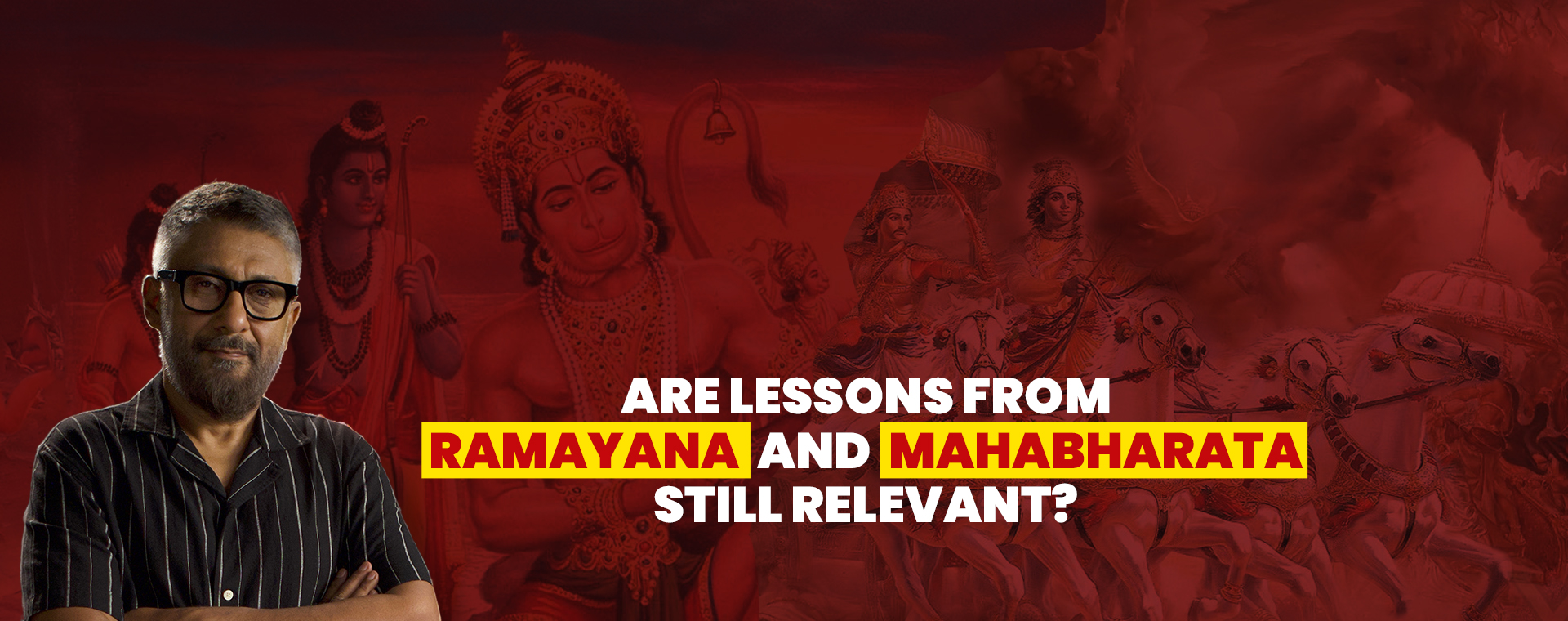
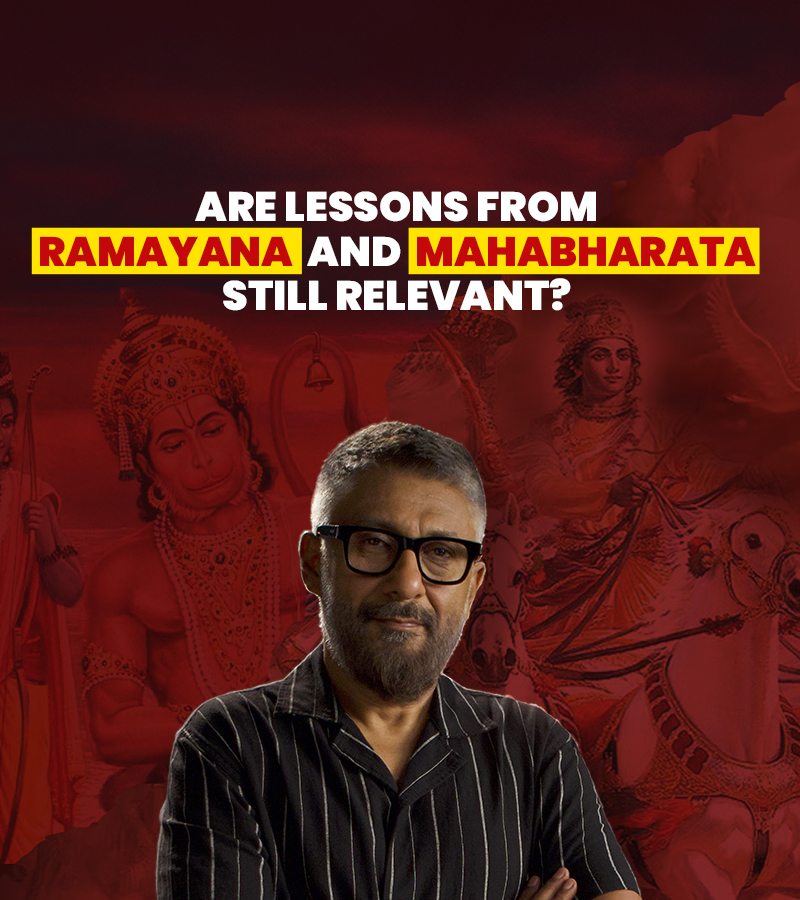
Revisiting the Indian Epics: Lessons in Leadership from the Mahabharata and Ramayana
We’re uncovering ancient leadership insights that still resonate in today’s world, even thousands of years later!
We’ve all grown up listening to tales of Mahabharata and Ramayana, imagining grand battles, divine interventions, and deep philosophical dilemmas at the forefront. But beneath all the godly drama and heroic fighting, these ancient Indian texts present timeless wisdom about life and beyond.
While we’re not leading armies, the lessons from these tales serve as our guiding light through modern leadership challenges, teaching us integrity, resilience, and empathy. So let’s peel back the layers and learn what these epics can teach us about being the kind of leader people want to follow.
1. Arjun’s Dilemma: Finding Clarity in Chaos
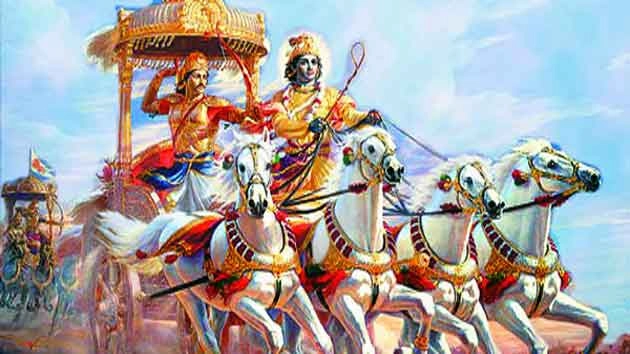
Image credits: www.webduniya.com
One of the most legendary scenes from the Mahabharata is Arjuna’s dilemma on the battlefield of Kurukshetra. Faced with the conundrum of fighting his own family, Arjuna straddles the line between apprehension and righteousness. Completely relatable, since we’ve all been in this situation at least once. Leadership often forces us to stand where the lines between right and wrong are hazy, and decision-making can be anxiety-ridden.
Lesson: Clarity with Conviction
Krishna’s advice to Arjuna was to, basically, get it together, in a far more graceful way of course. But it’s a lesson in leading with purpose and acting with conviction, even when faced with overwhelming doubt. Leaders often find themselves at a crossroads, unsure of which road to take. Krishna imparts that aligning your decisions with your values is the key to the kingdom. Are you taking action in fear, or are you taking action to serve the duty to your higher purpose?
In an ever-chaotic world that never stops, strong leaders should have the ability to cut through the noise, find clarity, and act firmly. It’s not about always having the right answer but rather taking a decision and standing by it.
2. Rama’s Adherence: Duty Trumps Desire
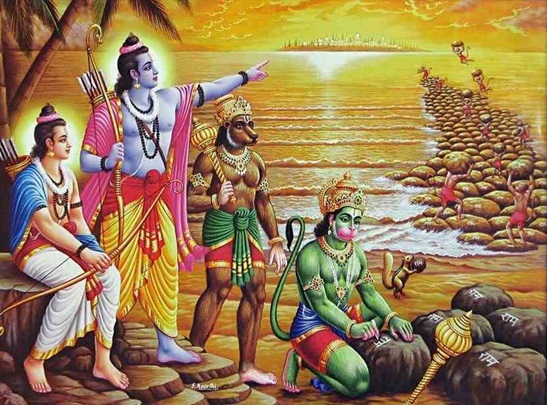
Image credits: www.lordhanuman.org
In the Ramayana, Rama’s life is practically one long, relentless saga of sacrifices. Exiled to the jungle for 14 years just as he’s about to be crowned king and then has to rescue his wife from a demon king. All while staying on the path of his duty, or dharma. Rama’s unwavering commitment to upholding righteousness makes him one of the most admirable leaders in Indian mythology.
Lesson: Always Follow Your Duty
Leaders of today are constantly under pressure — sometimes the temptation to take shortcuts for instant gratification can be strong. But Rama’s story tells us that true leadership isn’t about power or personal gain but about sticking to your principles, come what may. Yes, this path might not always be glamorous or easy (Rama’s story is a testament to that), but integrity fosters trust, and trust is the building block of solid leadership.
In the professional setting, this can translate into making hard choices, even if they’re unpopular. While leaders sometimes cave under pressure or give into temptation, Rama’s chronicle is an example that long-term success comes from following your values.
3. Krishna’s Strategies: The Power of Vision
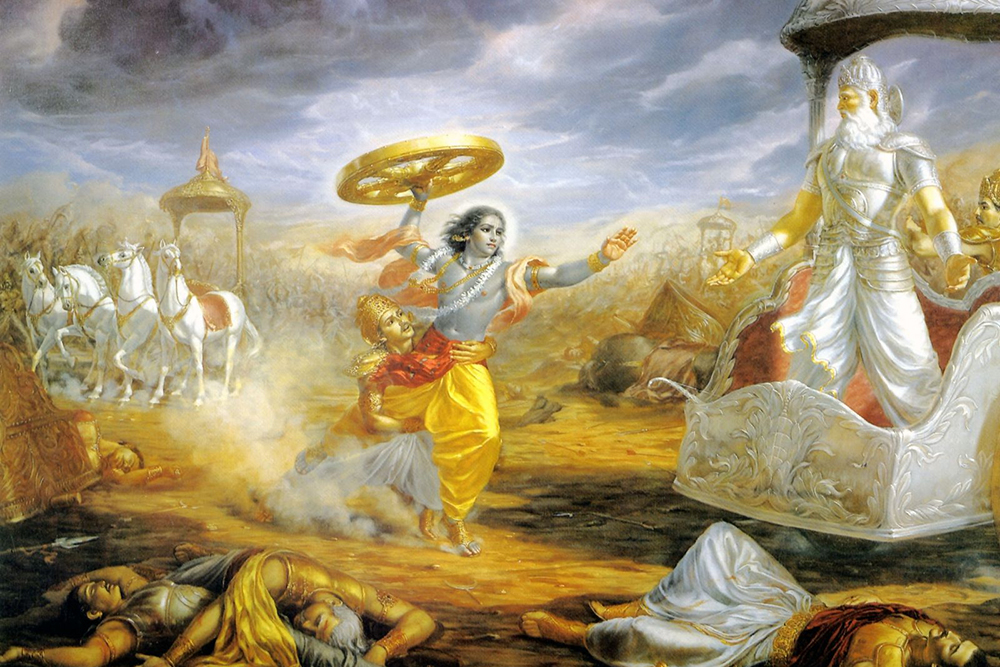
Image credits: www.mythoworld.com
Krishna, though a god, was perhaps the ultimate strategist in the world. In the Mahabharata, he served the role of a guide, not a king or a warrior. And, we’re all aware that his strategy acumen was legendary. From battlefield tactics to navigating the Pandavas through impasse, Krisha was always three steps ahead of the game.
Lesson: Keep the Big Picture in Mind
Leadership isn’t gioing about everything solo; sometimes it’s about taking a step back and envisioning the picture at large. Krishna teaches us that having a clear vision and using smart strategy to get to your goals is paramount. It’s not about being in the thick of it always but rather knowing when to take action, when to advise, and when to stop and let others take charge for a change.
In modern leadership, this means foresight and adaptability. Great leaders are always proactive instead of reactive. You must predict your team’s challenges and prepare them for gruelling moments. After all, you can’t be everywhere at once.
4. Draupadi’s Resilience: Facing Adversity Head On
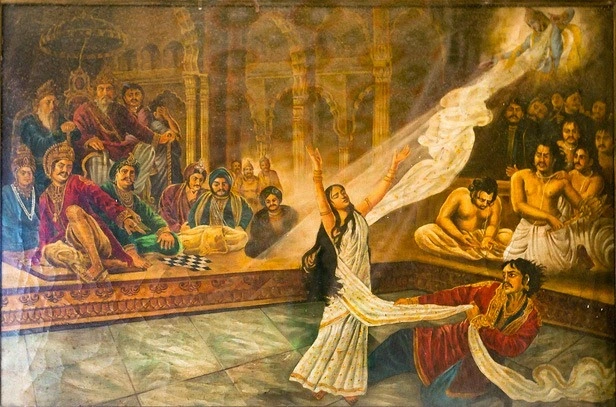
Image credits: indianetzone.wordpress.com
One of the most complex and powerful figures in the Mahabharata, Draupadi went through incredible trials and tribulations — humiliation, exile, and the loss of her children — and yet, she held her head high. As a queen, her leadership came not from having the throne but rather from her strength of character.
Lesson: The Courage to be Resilient
Leadership doesn’t always mean sunshine and rainbows; it’s about standing tall even when things fall apart. Draupadi’s life story underscores the power of resilience and strength while facing adverse times. Leaders of today, whether they’re sitting at the top or managing teams, must cultivate the same resilience.
When things go wrong, and they will, the ability to pivot, adapt, and keep moving forward is what will set you apart from the being a sheep in the herd. It’s not the fall that defines the leader but how you dust off and rise up.
5. Hanuman’s Devotion: Straight from the Heart

Image credits: www.yogayuktalife.com
It would be an injustice to speak about legendary leaders without mentioning Hanuman from the Ramayana. While he wasn’t one of the central figures, he left such a significant impact with his unwavering devotion to Rama and his ability to guide with empathy, making him one of the most adored characters in the saga. His valour wasn’t just in his physicality but also in his emotional depth. He was deeply compassionate towards those around him and always showed up when they needed him.
Lesson: Leading with Empathy
In a world where most people don’t have time to think about anyone but themselves, Hanuman’s story teaches us that empathy is often an undervalued but critical skill. His leadership wasn’t about being the strongest or the smartest —- it taught us about leading with compassion and understanding, building relationships, and being there for your people no matter what.
Empathetic leaders don’t just follow their heads but also their hearts, it’s a delicate balance but a pivotal one. They listen, they care, and they build atmospheres where people feel appreciated. Leadership doesn’t have to be transactional, it’s a beautiful opportunity for you to forge relationships and build strong, loyal teams.
Wrapping Up
While the Mahabharata and Ramayana may be ancient scriptures, their wisdom is relevant even in today’s day and age, just as it was eons ago. From Arjuna’s pursuit of clarity and Rama’s adherence to dharma to Krishna’s strategic prowess and Hanuman’s compassionate heart — we’ve only accessed a drop in the ocean when it comes to the knowledge these tales impart.
These epics are a testament to the fact that leadership in modern times demands a unique combination of integrity, empathy, strategy, and resilience. While we aren’t fighting battles of the centuries or leading divine armies, the principles of great leadership are spelled out the same. So, take a page out of these timeless sagas, and let their wisdom be your guiding light on this journey. If Arjuna could figure it out with the weight of an entire war upon his shoulders, you can certainly nail that big project you’re feeling anxious about.






